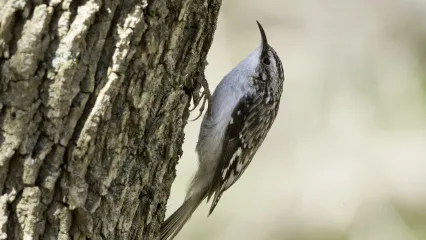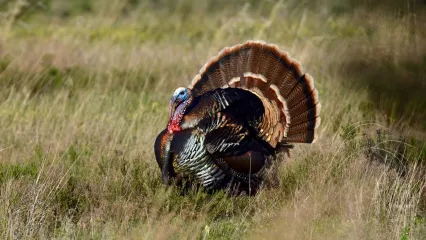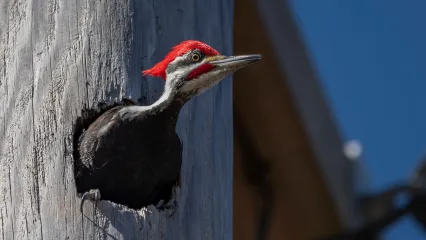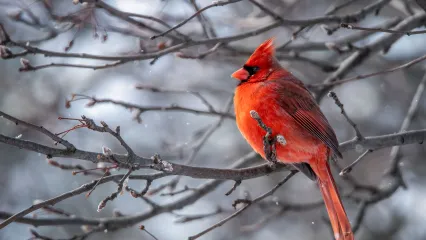
Description
This small bird is slightly smaller than a sparrow, with mottled brown, black and buffy white plumage on the wings, back, tail and head. The throat, chest and belly are white. The bill is thin and slightly down-curved. The tail feathers are relatively long and pointed at their tips. Brown creepers resemble the red-breasted and white-breasted nuthatches, except both nuthatches have grayish-blue upper parts (head, back, wings and tail). Brown creepers also resemble several species of wrens, but wrens behave differently and hold their long tails upward at an angle and never angled down against a tree trunk.
Size
Just over 5 inches in length.
Habitat
Brown creepers are only found in the Great Plains and Southeastern United States between mid-October and early April. They breed in the northern states and Rocky Mountain region where their preferred coniferous trees are more abundant. In Oklahoma, brown creepers can occur in any type of forest or woodland habitat, but are most common in riparian forests and mature forests. They are uncommon, but can be found in urban and residential areas with mature trees.
Life Cycle
Brown creepers are rare visitors to feeders but can be attracted with suet or miracle meal. Away from feeders, they forage on insects.
How To Observe
Detection is the biggest challenge; once the small, camouflaged bird is seen crawling up the tree trunk, the birds’ shape, coloration and distinct “creeping” behavior clinch the identification. Only the slow and steady progression upwards and the swift flight back to the base of the trunk give away its location. These birds are usually seen alone or in small groups of less than five birds. They forage along tree trunks and branches for insects and will hold their long tails against a tree trunk for support as if it were a third leg. Because of this, they can only move upward in a tree, never downward like a nuthatch. They are most likely attracted to suet feeders placed on the trunk of a tree. Sometimes brown creepers join mixed-species flocks made up of Carolina chickadees, tufted titmice and nuthatches.


